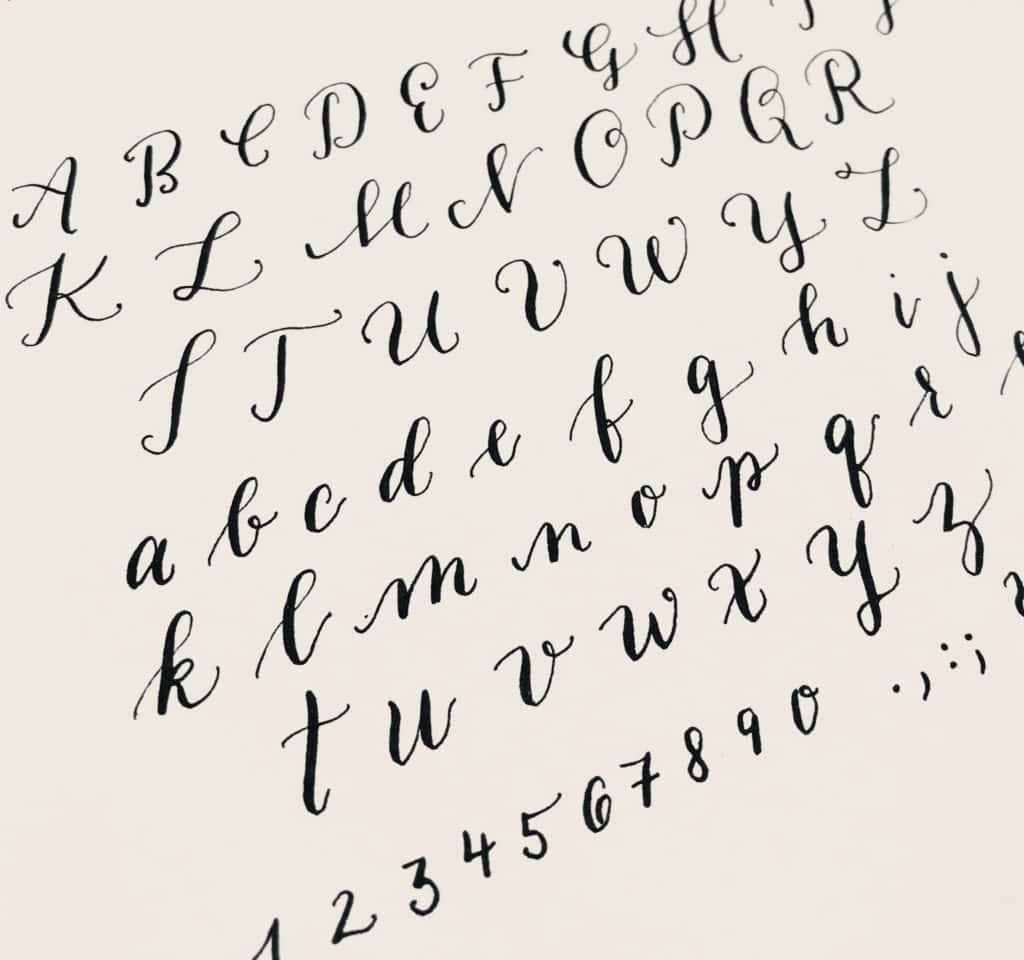Weddings are full of etiquette rules. Some rules were made to be broken! (Examples: who says you need wedding cake, who says you can’t have a bridesman or a groomswoman, who says you can’t get married on a Friday?!) Addressing your envelopes with the names on your guest list is one of those etiquette rules that should really be followed. Many couples are having to navigate through countless titles (Dr., Mr., Mrs., Miss, Major, etc.) while properly laying out the wording itself! But, don’t panic. We’ve compiled some tips and tricks to help you through the wild world of wedding invitations and envelope addressing.
Note: The following post may mention an “inner envelope” in some sections. An inner envelope is usually associated with a very formal, traditional wedding. Although not very common here in South Dakota, it has been included to accommodate those couples who request them. If you are using the word “formal” to describe your wedding, you may want to consider ordering an inner envelope. If budget is more important to you, save the cost of an extra envelope, and skip the inner envelope. Your wedding invitation designer (Hitch Studio does that!!) will help you navigate all of this.
Let’s jump right in.
Rules for addressing invitations to a…
- MARRIED COUPLE WITH SAME LAST NAMES
This will most likely be the easiest rule of envelope addressing you will come across. For starters, both names should be included (even if you aren’t close with both members of the couple), and placed on the same line. Guests rely on who the envelope addresses to determine who is invited and who isn’t.
Example:
Mr. Karl and Mrs. Renae Holton OR Mr. and Mrs. Karl Holton
1234 Jackrabbit Lane
Brookings, SD 57006
For those using inner envelopes: Omit first names. See example below.
Example: Mr. and Mrs. Karl Holton
If you are inviting children as well: List children in order of their age, oldest to youngest on a line under the parents/adults
Example: Mr. and Mrs. Karl Holton
Kylee, Andy, and Joshua
2. MARRIED COUPLE WITH DIFFERENT LAST NAMES
Now this is where you can play favorites! Just kidding—but this is where you list the person you’re closest with first. If you are close with both members of the couple, list their names in alphabetical order. This rule also translates to the inner envelope (if used).
Example: Mrs. Kristen Walter and Mr. Robert Banter
3. UNMARRIED COUPLE LIVING TOGETHER
Just like a married couple, both names should be included on the front of the envelope. However, each name gets its own line.
Example:
Mr. Craig Halter
Ms. Breanna Briggen
1234 Jackrabbit Lane
Brookings, SD 57006
List the names in order of acquaintance level, like you do for a married couple with different last names (see section above). If you don’t know the other half of the couple very well, it is acceptable to write, “& Guest.” Example: Mr. Craig Halter & Guest. If you know the name of the long-time boyfriend or girlfriend, do them a favor and list it!
4. RANKED
As if there weren’t enough Mr., Mrs., Ms., Miss, etc., you might have to juggle rankings, as well. However, you can forgo one when using the other. They replace the other!
Most modern couples include their professional titles when being addressed. We’ve compiled a short list below, in case you aren’t familiar with the title-profession combos.
Medical Doctor: Doctor Angela Borsma (If a married woman is a doctor, her name gets listed first if she outranks her husband.)
PhD Doctor: Dr. Roxanne Luchsa (If both husband and wife are doctors, you can list ‘Drs. Robert and Elise Williams’)
Judge: The Honorable Jay Fellmeyer
Clergy: The Reverend Donald Hitchcock (Christian); Father Andrew Dickinsen (Catholic); Rabbi Thomas Gordon (Jewish); The Most Reverend James Smith (Bishop)
Military: Captain (Commander or Major) Clint Holton
Army, Air Force, Marines: Colonel Jay Sconer (man)
Officer: Lieutenant Corin Adams (woman)
Navy or Coast Guard: Commander James Smith
Retired Military: High-ranking officers use their titles followed by their branch of service, even after retirement, with “retired” added: General James Edward Jackson, United States Army, retired
Junior: When spelled out, “junior” and “senior” should be listed in lowercase. When abbreviated, it should be capitalized. Either option should be preceded by a comma. Mr. James Smith, junior — or — Mr. James Smith, Jr.
5. SAME-SEX COUPLE
Use the same rules for a same-sex couple as you would a married or unmarried couple.
Example for same-sex unmarried: Mr. James Jones
Mr. Samuel Smith
Example for same-sex married: Mr. James Jones and Mr. Samuel Smith
(If not sharing last names, put last names in alphabetical order.)
Example for same-sex married with same last name: Mr. and Mr. James and Samuel Smith
6. FAMILIES
Children of the couple can be either addressed by first name on the address’ second line or following their parents’ titles as “and Family.” However, the latter leaves room for misinterpretation.
Modern families may also have children from different parents and/or past partners. In this case, it is easiest to refer to the children as “and Family.” However, this is subject to personal preference.
Example:
Mr. and Mrs. Clint Fulton
William, Kate and Jonathan
OR
Mr. and Mrs. Clint Fulton and Family
If you do not include “and Family” or the names of children on the envelopes, it is implied that the children are not invited to the wedding. With that being said, don’t be surprised if couples assume their children are invited. It is best to use wording on the invitation or RSVP card expressing clearly that the wedding will be adults-only to ensure there is no misunderstanding.
Example: We have reserved __2__ seats in your honor at our adult-only wedding reception. (Which leaves no misinterpretation that this family can bring all five members listed above).
No matter what you choose to do, Hitch Studio can help you choose wording that is pleasant, but clear about your wishes.
7. CHILDREN AGE 18 OR OLDER
Because children age 18 and older are considered to be adults, and especially if they don’t share an address with their parents anymore, they should get their own invitation. However, when several siblings are over 18, they can receive a joint invitation. In this case, each name should occupy its own line on the outer envelope.
8. WIDOWS
For a widow who did not remarry, follow this format: Mrs. James Smith (or simply Mrs. Smith)
Be very sensitive in this situation. If your invitee was recently widowed, don’t include “& Guest.”
Miscellaneous notes…
- Anything that the post office sees (envelope, return RSVP card, etc.) should have an abbreviation of the state. Example: SD versus South Dakota.
- An ampersand is used when referring to someone’s guest (example: Mr. Charles Holton & Guest), whereas “and” is used when referring to members of a married couple (example: Mr. Charles and Mrs. Diane Holton).
- When in doubt, roll out the red carpet (go formal, rather than informal). Does she go by Captain? Does he go by Dr.? Use the title if you aren’t sure! Being overly respectful has never been shunned.
- Using white labels on the envelopes of your wedding invitations can make them appear less personal than they should. Recommended options are hand-addressing each envelope, printing directly on the envelopes with a font that matches your stationery suite, or hiring a calligrapher to address them for you. If hand-writing your invitations seems like it will take forever, be sure to order your invitations with plenty of time for this process! Hitch Studio can help recommend a calligrapher or can print on your envelopes for you! (Just provide your Excel spreadsheet)
- Your return address should go on the back flap of the outer envelope (not in the upper left corner of the front of the envelope).
- Always abbreviate Mr. & Mrs. & Ms.
- Do not capitalize the word “guest” if you’re inviting a plus-one. Bonus tip: Try to find the name of the guest you’re inviting to personalize the invitation and use the same rules above as listing an unmarried couple.
- When addressing attorneys, CPAs or other professional titles, only use those abbreviations in social or business settings. They should not be used when addressing wedding invitations.
Does this help? We sure hope so! Let us know if you have specific questions and we can help answer them!
For more information on wedding invitations & postage, check these blogs out:
Five tips for Postage on Wedding Invitations
How to Include other Wedding-Related Information on Your Invitations

